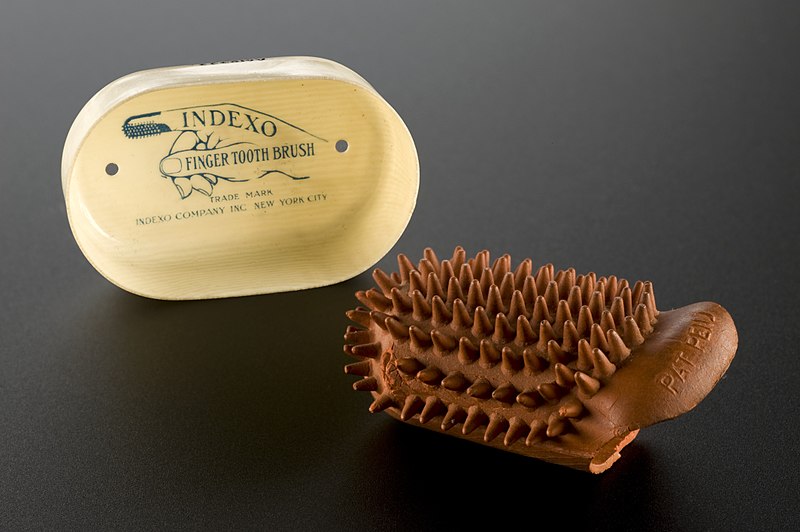I was doing some writing last night and came up with a question that needed answering. I thought I'd share a bit of what goes on in a writer's mind when working on historical novels.
In my book, the mother yells up the stairs at her girls. "Don't forget to comb your hair and brush your teeth." STOP. Wait a minute. Did children brush their teeth back in the 1920s? What types of toothbrushes did they use back then? Did they have toothpaste or have to use tooth powder? Those are some of
After Googling several topics online - including dental hygiene, dental care, toothbrushes and toothpaste in 1920s- I came up with conflicting information. Some of the sources said that as late as the 1920s "many Americans did not brush their teeth" and other sources said that in the 1920s Americans obsessed with oral hygiene.
 |
| Finger toothbrush - Courtesy of Wiki-commons |
Children in city schools were exposed to the good habit of brushing their teeth twice a day. The public school system of New York had a "Toothbrush Drill" as early as 1912-1913 teaching the children this song: "Here we are coming to clean our teeth, clean our teeth, clean our teeth/Here we are coming to clean our teeth; and we do it night and morning." Popularizing the Toothbrush
On the other hand, toothbrushes were made of boar bristles in the 1920s which tore up the mouth and gums, discouraging people from using them. Many people preferred to clean their teeth with much softer rags. By then the toothbrush handles were made of plastic celluloid replacing the former bone or wooden handles. Softer synthetic bristles, like ours today, weren't invented until the 1938 replacing the animal hair bristles.
For traveling, the finger toothbrush was used. Made entirely out of rubber, the devise fit over a fingertip so that the user could apply the brush to their teeth.
_(14581887317).jpg/1280px-The_Dental_cosmos_(1914)_(14581887317).jpg) |
| Courtesy of Wiki-commons |
 |
| Courtesy of Wiki-commons |
So what did I conclude about putting that sentence in my novel? I'll leave it in. I'm sure a mother somewhere in Racine, Wisconsin told her children to brush their teeth back in August, 1926.
Information taken from: "From Oral Health to Perfect Smiles: Advertising and Children's Oral Health" by Heather Munro Prescott.
No comments:
Post a Comment